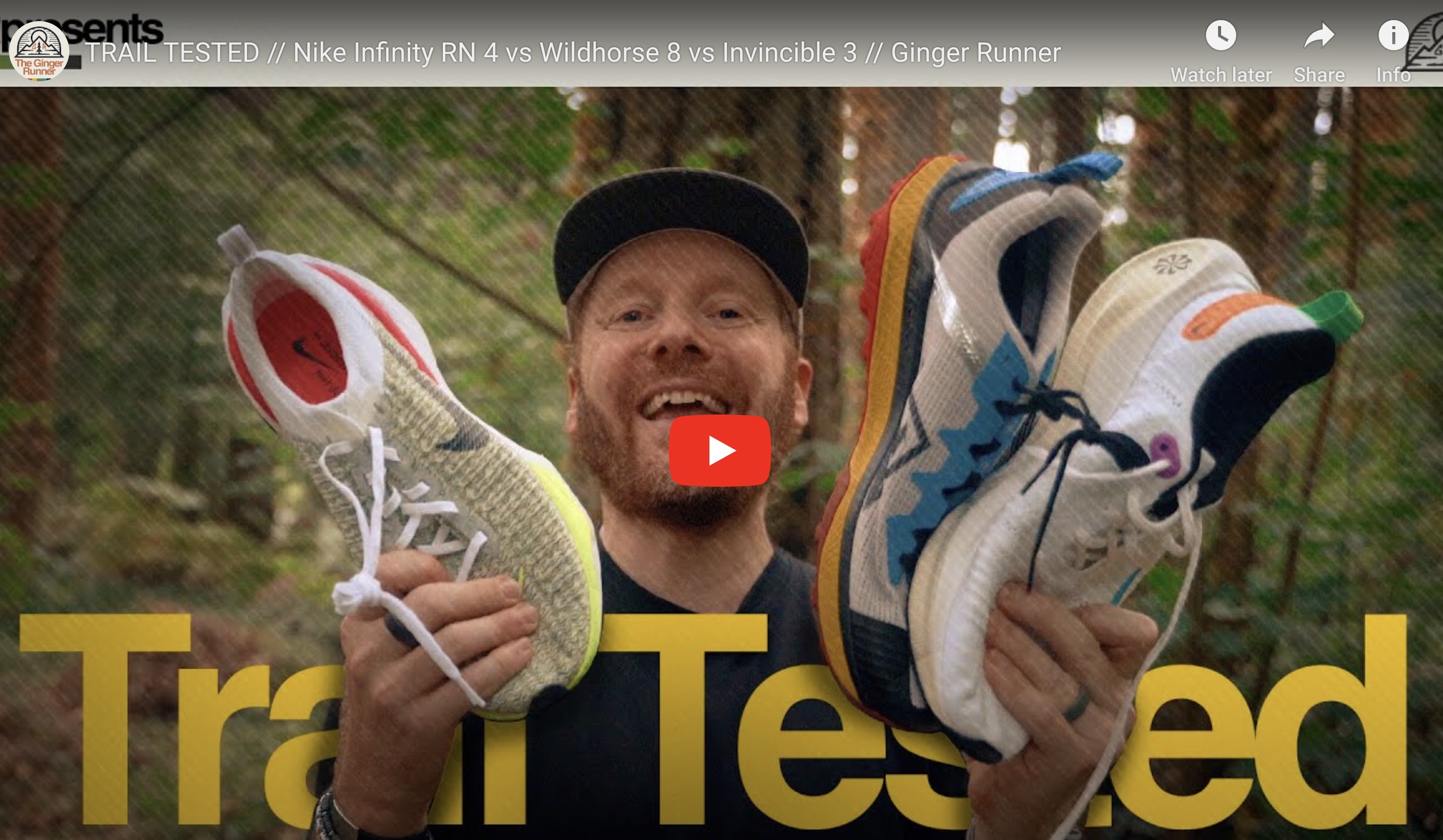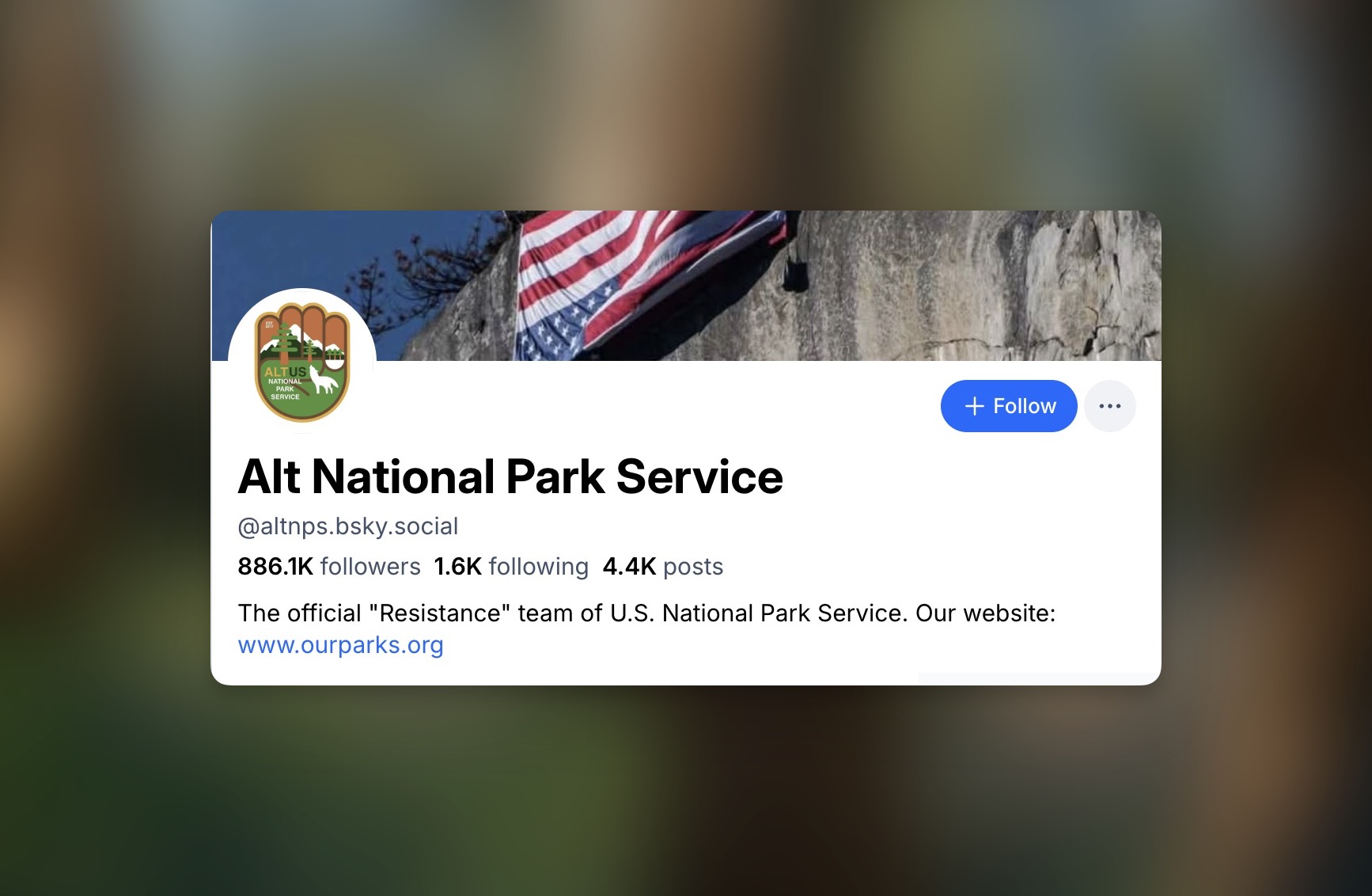I grew up running cross country and track in the mid-2000s. A couple times a year I would make the pilgrimage to my local specialty run retailer, see what was in stock, and find a pair of trainers and/or racing flats. The options were limited, usually Nike, Brooks, and Asics at the time. The shoe landscape has changed dramatically since then, not only with new brands and technologies, but with how people discover and choose running gear. While specialty retailers still play an important part in local running communities, more runners are turning to influential runners on YouTube to help them make buying decisions.
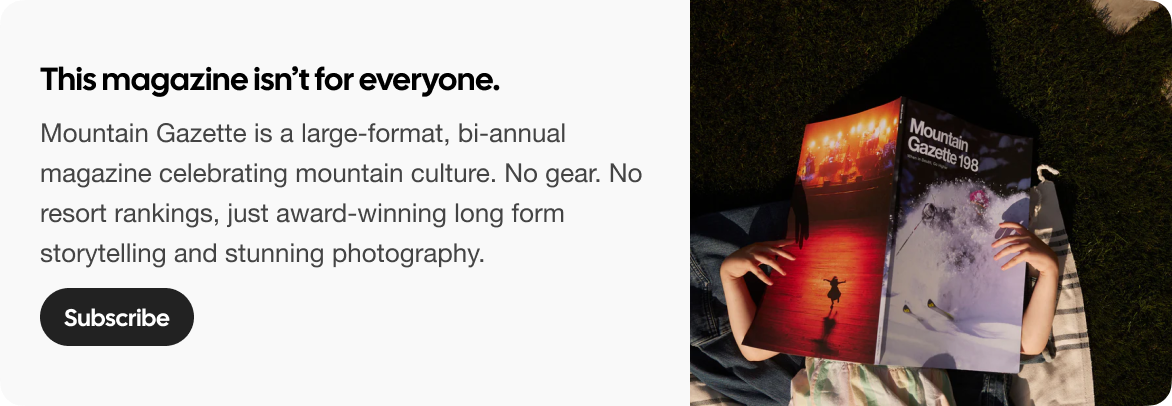
When Arc’teryx launched a new set of trail shoes a few weeks ago, I didn’t go to their website or a review site to find first impressions. I went to YouTube. And oddly enough, there was no coverage yet. For what was touted as a major launch for Arc’teryx (their first shoes not made in partnership with Salomon), this felt odd. It says something about the current state of play that I’m surprised when a major shoe isn’t immediately reviewed by one of these channels.
Gordon Wright, founder of Outside PR, the agency for Hoka, says that YouTube has become a valuable channel for the brands they work with. “Runtubers are critically important in the purchasing decisions of many runners. Increasingly, we’re seeing the power of multi-media creators like Believe in the Run, Road Trail Run and Doctors of Running – they combine web reviews with online, social and video content that maximizes their reach.” My own experience and (very) anecdotal research confirms this; in a quick poll to my audience on Threads, 47% of people said they go to YouTube first.
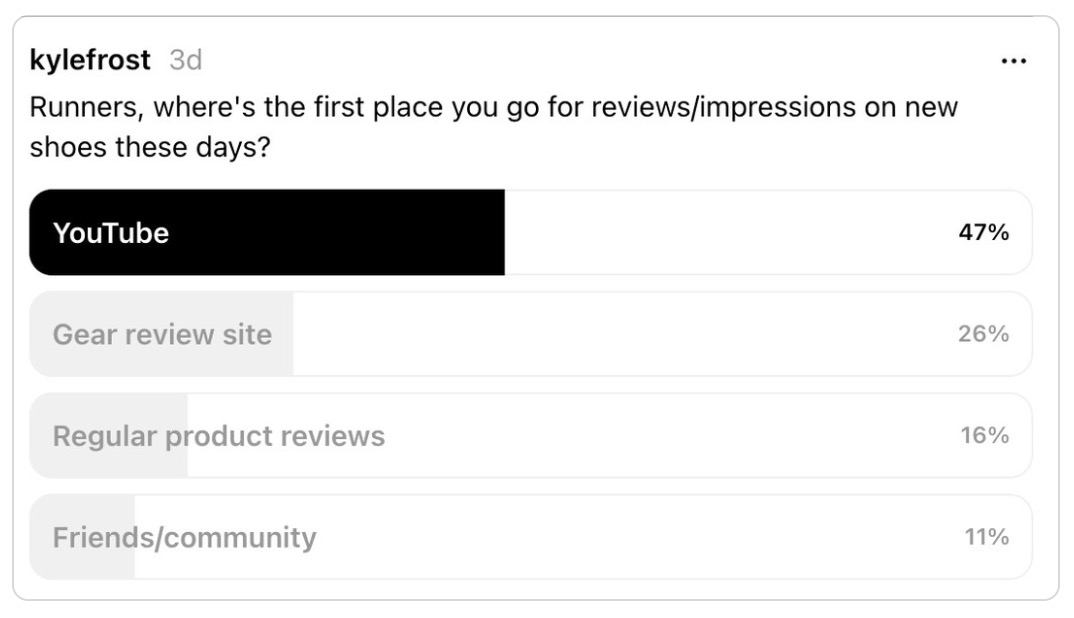
At least part of this is the level of trust and connection that folks are able to develop via YouTube. The platform has allowed these runners to build long-term relationships with their audience – they follow training progress, get a strong sense of whether there’s a connection in running style/preferences, and build review trust over time.
Says Gordon, “I think one reason they have such resonance is their authenticity. Seth James Demoore is completely unafraid to deliver a bad review; same thing with Kofuzi. Mike starts every review with a reminder to his viewers that, while he was given the shoes to test and review, the brands behind them have no say in their editorial content.”
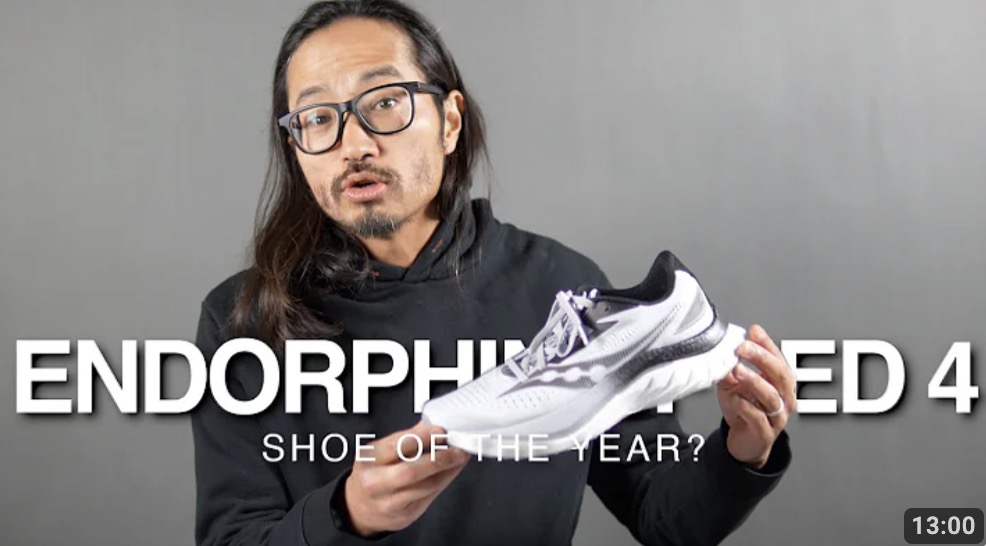
*Credit: Kofuzi *
The Tubers
Michael Ko, known more colloquially by his handle Kofuzi, has been on YouTube for many years (now with 180k subscribers). He’s one of the most recognizable runtubers, particularly in the road and marathon realm. More in my wheelhouse are channels like Ethan Newberry of Ginger Runner, Ben Parkes, and Jeff Pelletier, who tend to cater more to the trail crowd (I would also be remiss to not mention Billy Yang, an OG in the space). There are dozens more. Most of them touch on gear reviews at varying levels of depth, but many also weave that in with training vlogs, race videos, and documentary-style content (Jeff’s Moab 240 documentary is chefs kiss).
That variety is an important aspect of why so many running channels – not just reviewers – have been successful on YouTube. Ko notes that, “I think that social media really allows people to find someone that’s making content that’s exactly for you. Youtube channels feel a lot more specialized and directed rather than something that has to hit greater common denominators like a running magazine.”
One thing I did notice while doing research for this piece is that this space remains extremely male-dominated. There are exceptions, like Run Like Heller, and others that are lifestyle/training based but it’s mostly men doing shoe reviews in the running space.
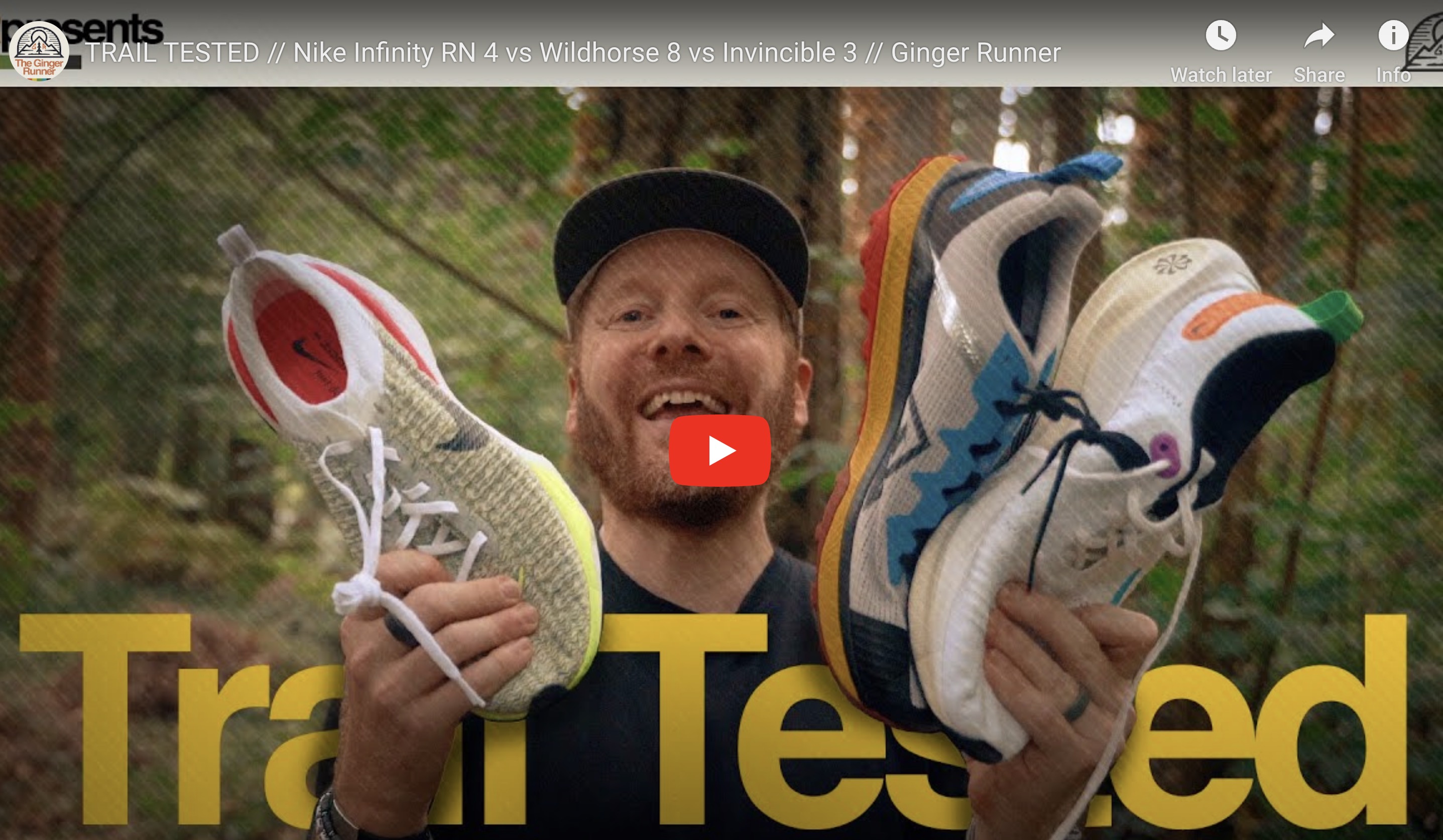
The Ginger Runner
The critics
With growing popularity and influence comes increased criticism. Ko notes that every time he has a popular video he receives comments like “this guy isn’t fast enough” or “he didn’t even run in college”, as if those things truly detract from his ability to review shoes or share his running journey. It’s a criticism is that is often leveled at runners with large audiences by jaded “real” runners.
Like with other sports, there’s also an ongoing conversation about how “influencers” (whether Instagrammers, YouTubers, reviewers, elites, or amateurs) affect sponsorship budgets and professional runners. There’s been a discussion in recent years about the numbers of bibs being given out to influencer runners at major marathons who don’t have to qualify or participate in lotteries for major events.
For many years being the best was the only way to capture the eyeballs and influence to make sponsorship dollars worth the investment. If you were the best athlete, you’d be on TV for the Olympics, major marathons, or the World Championships. Now, in a world where inspiring people have captivated audiences many times that of a pro, the cost/benefit sometimes swings in a different direction.
No right answers
Is this “good” for the sport? It’s hard to say – it’s not really a “good/bad” situation. It certainly makes it more challenging pros to make a living, given that there’s new added pressure (often built into contracts) to build a social audience, rather than just running fast or winning competitions. And sometimes athletes with large followings might get invited to an event or race, taking a spot from a developing athlete on the cusp of the elite level or another amateur lottery entry. Road running lives in a interesting place, given that’s it’s not really a “professionalized” sport in some ways – it’s millions of “slow” runners that make up the bulk of participation and keep competitions in business, not elites.
In a recent Instagram post, Ko noted that “Of the top 8 most-tracked athletes at CIM [California International Marathon], only one was a pro runner, and he was 8th most-tracked. In other words, semi-fast runners who invest in telling their own stories are more interesting to running fans than merely fast runners when they don’t tell their stories. Imagine if brands provided better story-telling support to their athletes.”
Granted, CIM is not considered a marathon “major”, so there are fewer recognizable pro names. It’s often a popular race for amateurs to hit PRs and reach qualifying standards. This trend does not bear fruit at last year’s Boston marathon, where most of the top tracked runners were pros and/or top finishers. But the general thread runs true. People like athletes they can identify with and have a tie to – whether they’re pros or not. And as Ko notes, perhaps it should really be the brands that are on the hook for helping their athletes build that skillset, not just giving athletes another job to do.
Some athletes and teams have already realized this, like Leo and Lex Young, members of the legendary Newbury Park high school team and now collegiate runners at Stanford. With 48k subscribers on Youtube and ~50k each on Instagram, they’re regularly posting race and training recaps to their audience. The Boulder-based Tinman Elite team made social media and branding a core part of their presence (I think they have photo/video folks on retainer). Nnormal athlete Allie Ostrander utilizes Youtube to share her running journey. And, many more.
Looking forward
Both Wright and Yu think that YouTube is still a massively undervalued channel for running. While runtubers have been successful so far, in a sport with so many yearly participants you’d still expect those audiences to be larger. Millions of people experience running each year without YouTube or social media crossing their mind. The industry continues to grow, with over 60 million people participating in 2023 and significant sales growth, according to the Running Industry Association. This doesn’t mean that social media needs to be a necessary aspect of everyone’s relationship with running. As Ko says “For many people, running is a solo endeavor. But there are just as many who might not be aware that there might be a community for them, either online or elsewhere.”
